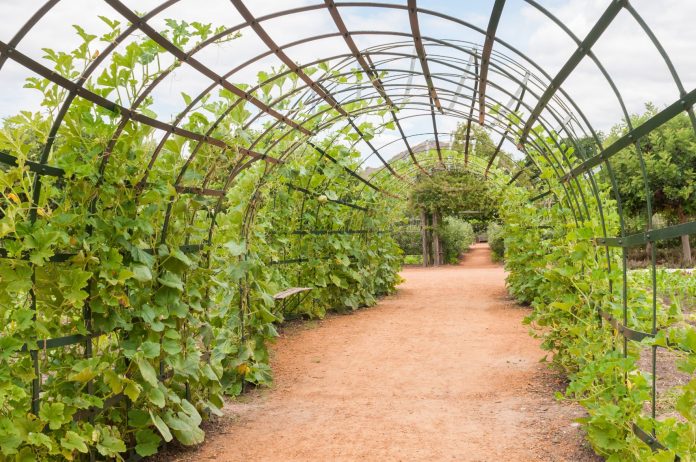
Ornamental shrubs, trees, lawns, and countless unknown plants fill most landscapes. These plants provide shade, beauty, and erosion protection, but you can’t eat them.
As older plants are replaced, or new areas are developed, consider adding edible plants to the landscape. Often more flavorful than grocery store produce, homegrown edibles come in all shapes and sizes, making it easy to match any landscape design. Gardens are not limited to traditional rows of tilled soil. Even if all you have is a balcony or a sunny window, you can grow edible plants.
What do these plants need?
Nutrient-rich soil, adequate water and 6-8 hours of direct sunlight are all that’s needed by most plants. Our soil in the South Valley tends to be heavy clay, which holds more water than other soil types, but it can be a tough barrier for young roots. Adding compost and mulching your soil will make it more hospitable and productive. If you have shady areas, mint, blackberries, chives, spinach and parsley can be planted. Before planting, be sure to read and follow the directions for specific planting depth, sun and water needs and spacing. Mature plant sizes should be kept in mind, too. Some of those tiny seeds turn into really big plants.
Many edible plants can be grown in containers, towers, or repurposed pallets. While there are lots of vertical or container gardens for sale, when adding edibles to a landscape a little creativity can go a long way to keep from spending a lot of money. Leaky buckets, broken down wheelbarrows, plastic coffee tubs and even old boots can be used as planting containers. Just make sure there is adequate drainage.
Raised beds are easy to make. They have the added benefit of being easier to weed and work than traditional garden beds. They also allow the soil to get and stay warm sooner, extending the growing season.
Salad makings
Lettuce, spinach, radishes, arugula, onions, garlic, fennel, cucumber, tomatoes and peppers can be added to most landscapes. Alternating green Romaine and red leaf lettuces make a lovely border. Repeat planting can provide many months of edible landscape. Cucumbers, squash and melons can be trained up a fence or trellis, providing beautiful greenery and blooms, plus a surprising bounty of food.
Culinary herbs
Herbs are very easy to grow and most of them require little to no care once they are established. Tender basil is an exception, but its flavor more than makes up for the effort. Thyme, lavender, lemon balm, chives, lemon grass, parsley, cilantro and sage all grow well from seed. Most of these plants are perennial, which means they will last for many years. Instead of traditional house plants, mint and oregano drape beautifully from a hanging planter and they add flavor to many favorite foods. They can be paired with a more upright plant, such as chives, to make the most of the space, add texture and provide twice as much food.
Fruits and nuts
Fruit and nut trees, bramble fruits, and vines add value to property and they produce delicious edibles each year. Dwarf fruit trees can be grown on balconies in containers. Bramble fruits, such as raspberry or blackberry can be grown along a fence, providing extra protection along with luscious fruit. Instead of an ornamental trumpet vine over your pergola, why not plant grapes? Just picture those sweet clusters hanging above your head, only an arm’s reach away.
Kate Russell is a Santa Clara County Master Gardener. To learn more about edible gardening from your local UCCE Master Gardeners, check out the Vegetable Planting Chart for Santa Clara County at mastergardeners.org/vegetable-planting-chart. Free talks are regularly offered to the public. For more information, check the events page at mastergardeners.org/upcoming-events. For gardening questions, ask at mastergardeners.org/ask-a-question or call (408) 282-3105 between 9:30 a.m. to 12:30 p.m., Monday through Friday.
Instead of traditional house plants, mint and oregano drape beautifully from a hanging planter and they add flavor to many favorite foods.












